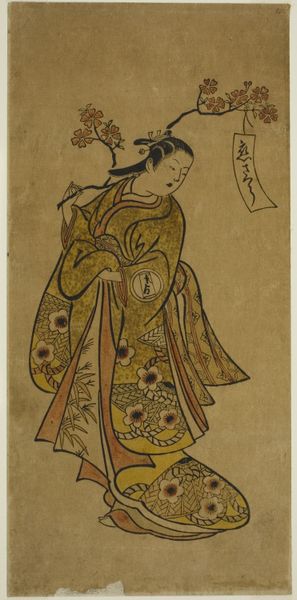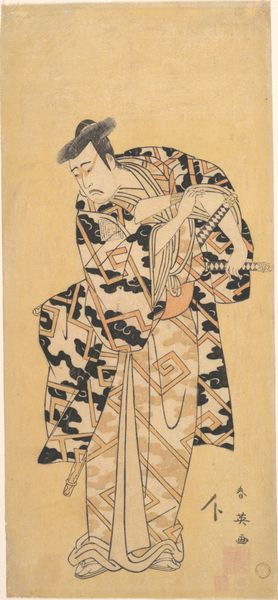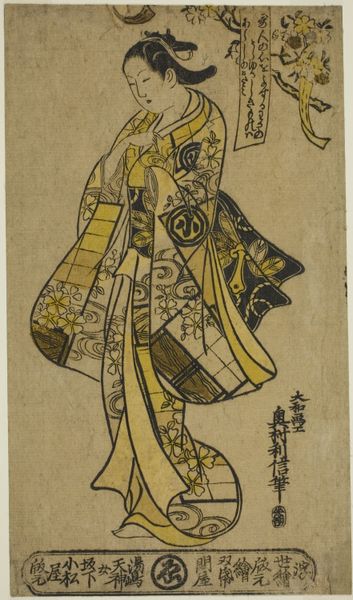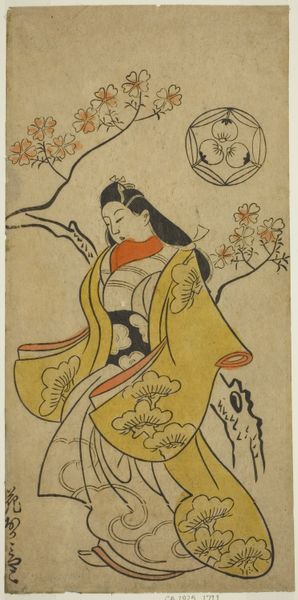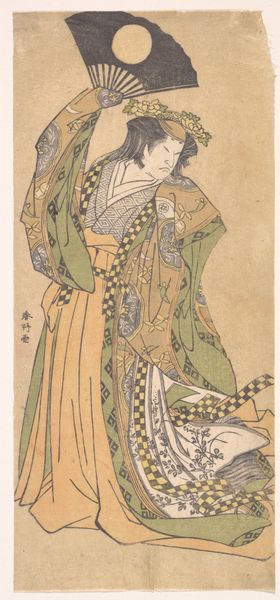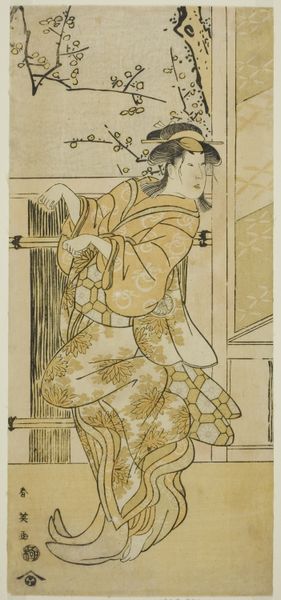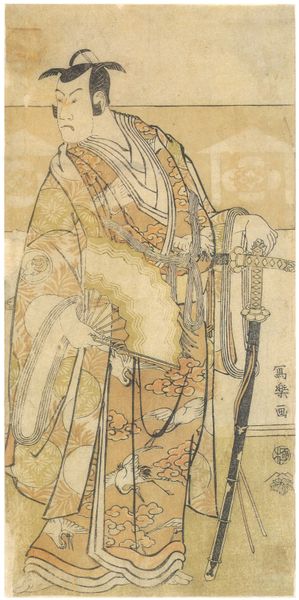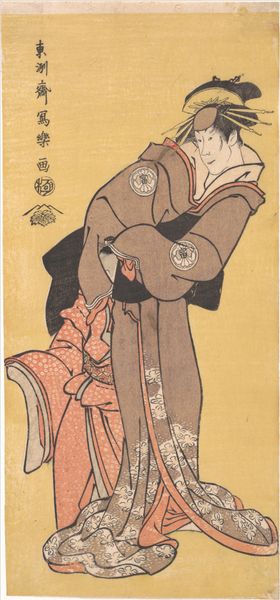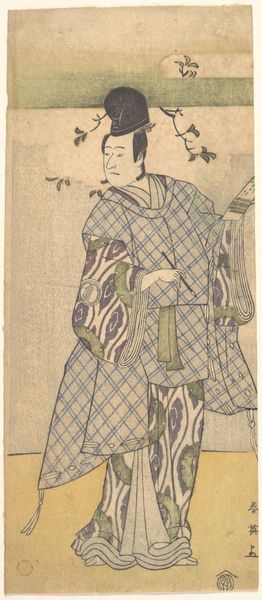
The Actor, Matsumoto Koshiro I 1674–1730 Reading a Letter 1743 - 1812
0:00
0:00
print, woodblock-print
#
portrait
# print
#
asian-art
#
ukiyo-e
#
woodblock-print
Dimensions: H. 11 7/8 in. (30.2 cm); W. 5 7/16 in. (13.8 cm)
Copyright: Public Domain
Curator: Welcome! Let’s spend a few minutes looking at “The Actor, Matsumoto Koshiro I 1674–1730 Reading a Letter,” a Japanese woodblock print from sometime between 1743 and 1812, by Katsukawa Shunko. Editor: I am immediately drawn to the graphic quality of this piece! The subject's intense gaze, his stance... There’s a definite tension in the composition. And the color palette—muted yellows and grays—adds a somberness to the mood, don't you think? Curator: Absolutely! The materiality is central here. Knowing this is a woodblock print illuminates so much—consider the labour involved. This wasn't a solitary act. It demanded skilled artisans for carving, inking, and printing. Ukiyo-e prints like this democratized art. They were consumer goods, accessible beyond elite circles. Editor: And we must also examine what is being communicated within those socio-economic systems. Actors like Matsumoto Koshiro I held celebrity status. Images of them were carefully crafted commodities designed to perpetuate certain narratives. Here, that stern expression seems to evoke defiance. What do you think? What role was performance playing for a society then under feudal law? Curator: Precisely. These prints were advertising for Kabuki theatre, boosting ticket sales, and fostering a connection between the public and the performers. Furthermore, look closely at the textures and the patterning on the kimono! That gives the audience an insight into the skill that it takes to prepare those materials in a specialized industry. It is very complex from a product lifecycle perspective. Editor: That patterned kimono functions more broadly too: it visually constructs status and perhaps alludes to the restricted extravagance within those social limitations. Curator: Exactly! The prints served to solidify that status by representing actors, in turn. It is important to recognise their production in relation to wider material culture. What are the specific pigment composition and application? The kind of wood, too, is crucial, and could well speak volumes about material availability and cost in that period. Editor: So, this portrait captures an actor playing a role, represented through the print-making process as a commercial venture intended to bolster societal standards within complicated structures. What you mention underscores how this seemingly straightforward image encapsulates a nexus of intersecting industries and influences. Curator: Yes, understanding that material reality deepens our connection to its cultural relevance. Editor: Indeed, a cultural artifact as much as an artistic expression. Thank you.
Comments
No comments
Be the first to comment and join the conversation on the ultimate creative platform.
